At Plum, product managers, designers, user researchers, and engineers are called builders. This is because each person plays an essential role in building products that solve problems and deliver value to our customers. As builders, we take pride in the work we do and the products we create. We believe that building great products requires a disciplined and systematic approach that combines creativity, user empathy, and technical excellence.
In this blog post, we would like to share our process playbook for building products at Plum. We will provide an in-depth look at how we approach product management, design, user research, engineering, and release management.
We also invite discourse and feedback from the broader community to foster learning and continuous improvement.
This post is divided into two parts:
- Part-1 is about building roadmaps
- Part-2 is about executing roadmaps
Building roadmaps
Step 1: Start with OKRs
We follow a bi-annual planning process that incorporates input from various teams and stakeholders. We start by creating a vision document that outlines our long-term goals and sets the foundation for our OKRs. Abhishek, senior leaders, and I collaborate to create this top-down vision document, which is then supplemented by inputs from all teams using a bottom-up approach.
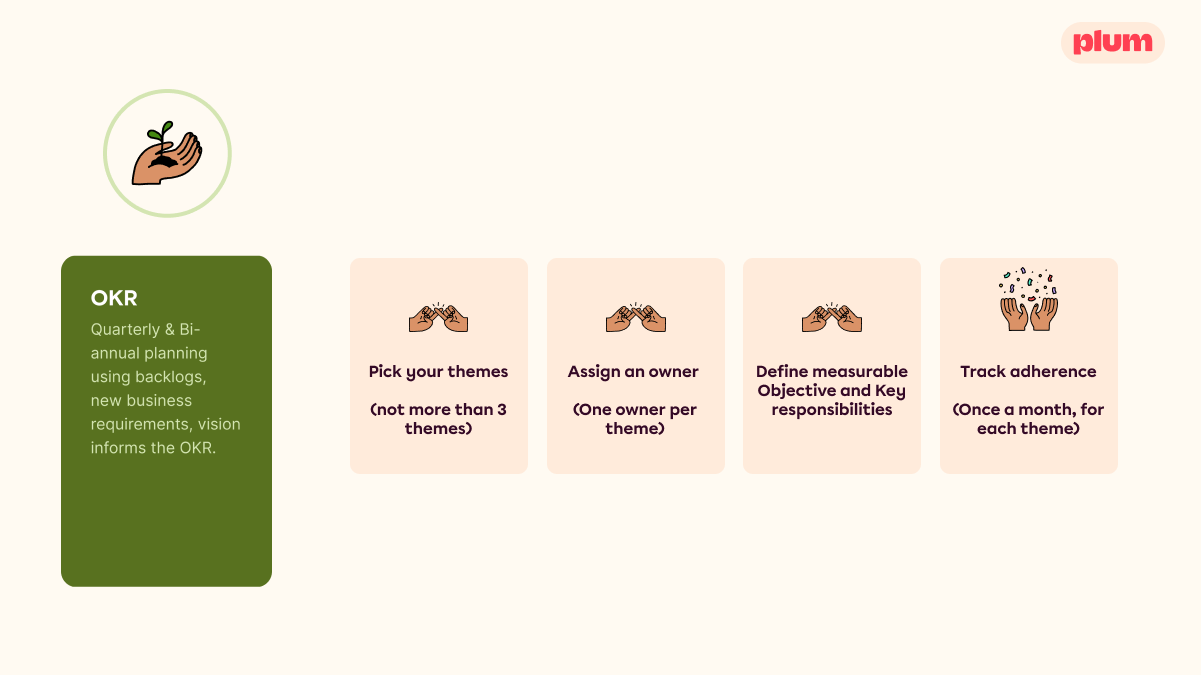
Objectives and Key Results (OKRs) are a popular goal-setting framework used by many companies. OKRs consist of a set of specific and measurable objectives that an organization or team wants to achieve within a given time frame, along with a set of key results that indicate progress towards achieving those objectives. The objectives should be challenging but achievable, and the key results should be measurable and directly related to the objective. The OKRs inform our prioritization and decision-making process for feature development and release planning.

Peak XV's Rajan on OKRs is a great resource
The way we design (and every company has to fine-tune this as per their own business context), the OKRs is to divide them into 3-4 themes and then align cross-organisational teams to solve for objectives and deliver key results within each theme. Themes should have an owner and teams huddle every month to measure and score the progress.
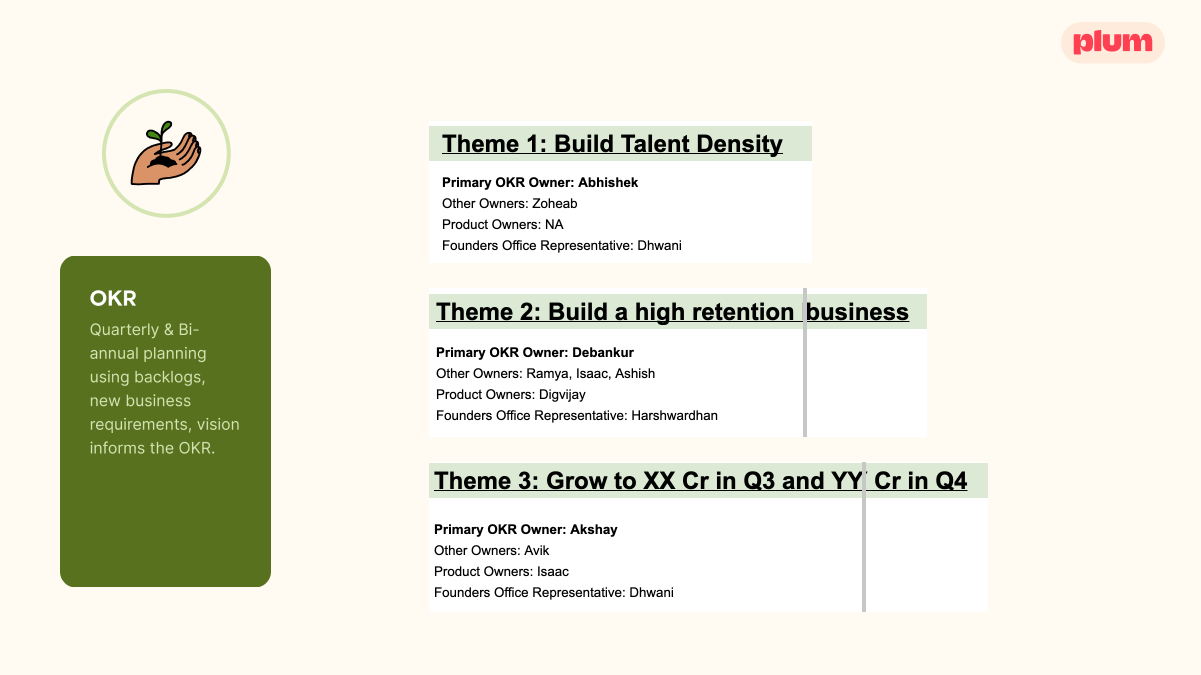
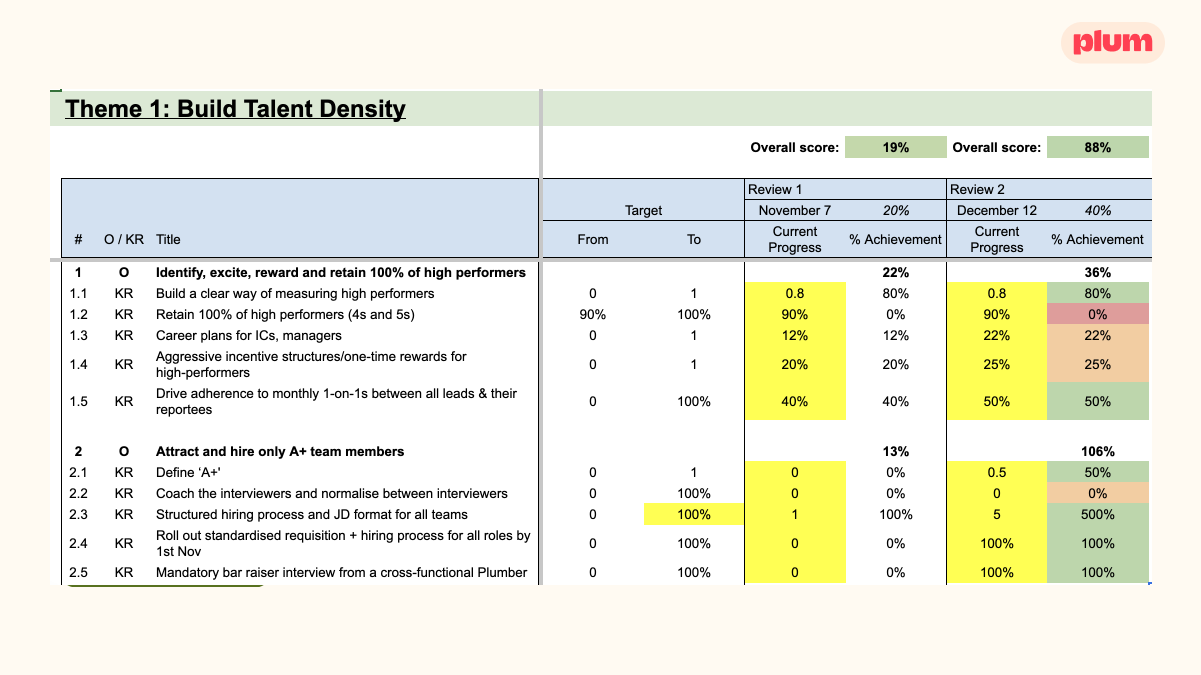
Sample OKR themes and scorecard
Step 2: Backlog and Release Roadmap
Bridging OKRs to Backlog
Initiating with OKRs offers us a high-level roadmap that aligns with the company's vision. However, OKRs are abstract and aspirational, and the next step is to convert them into tangible work items–your backlog. This is where you make the transition from 'what' to 'how'.
When transitioning from your OKRs, it's natural for the backlog to start resembling a laundry list. Don't be alarmed by its growing length; this is a normal part of the process.
Key principles to remember here include:
- Alignment with OKRs: Every item in your backlog should be a reflection of your OKRs, thereby ensuring that all work contributes to overarching goals.
- Continuous Grooming: The backlog is not a 'set-and-forget' list; it requires regular refinement to stay aligned with your objectives and constraints. More on this in the subsequent section on 'Grooming.'
- Prioritization Framework: This is where frameworks like Now-Next-Later come into play, helping to sort the backlog items by their urgency and importance.
- Roadmap Creation: A well-prioritized backlog, when aligned with time frames, essentially transforms into your release roadmap.
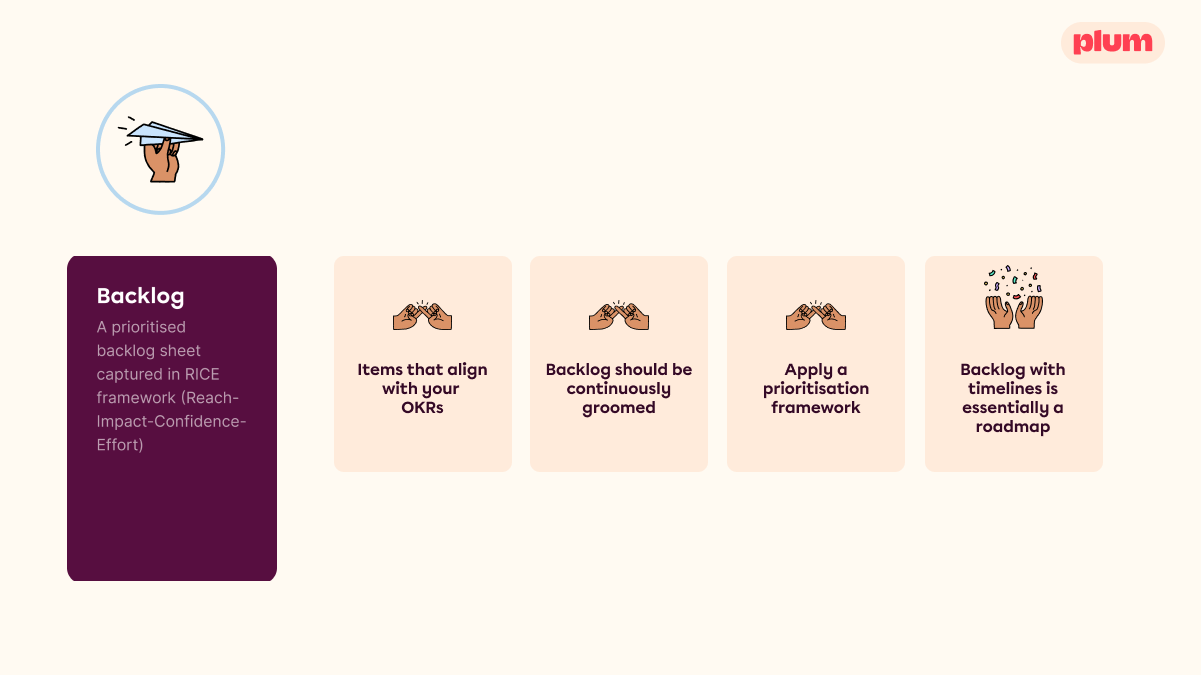
The transition from OKRs to a backlog and eventually to a release roadmap is a dynamic and iterative process. It ensures that your team not only knows what needs to be achieved (OKRs) but also precisely what steps to take to reach those milestones (backlog and release roadmap).
Prioritization: The Now-Next-Later Framework
After your backlog is populated, it becomes crucial to organize it effectively. This ensures that the team remains focused and is not overwhelmed by a sea of tasks. At Plum, we employ the Now-Next-Later framework for this very purpose:
- Now: These are critical items that directly align with current OKRs and are essential for meeting immediate business needs.
- Next: These are important but not urgent items. They're lined up for action right after the 'Now' category is cleared.
- Later: These are low-priority tasks. They should be re-evaluated in future planning cycles and aligned with upcoming OKRs or based on an increase in their relative importance over time.
This framework is revisited and adjusted regularly to ensure alignment with our OKRs and to adapt to evolving business needs.
Crafting the Release Roadmap
The post-prioritized backlog now transforms into a release roadmap. This roadmap fits your backlog into a time-bound framework, typically spanning a quarter. Here's how we go about it at Plum:
- Now, Next, Later in Time: The prioritized items are aligned to a timeline based on their category in the Now-Next-Later framework. This provides not just a sequence but also indicative timelines, offering all stakeholders a clear view into upcoming feature releases.
- Cross-Functional Alignment: This roadmap is disseminated across all departments to ensure transparency and seamless execution.
- Adjust with Agility: At Plum, our release roadmap is not etched in stone. It's designed to be flexible, allowing us to adapt to unexpected shifts in strategy or to address urgent issues that might arise.
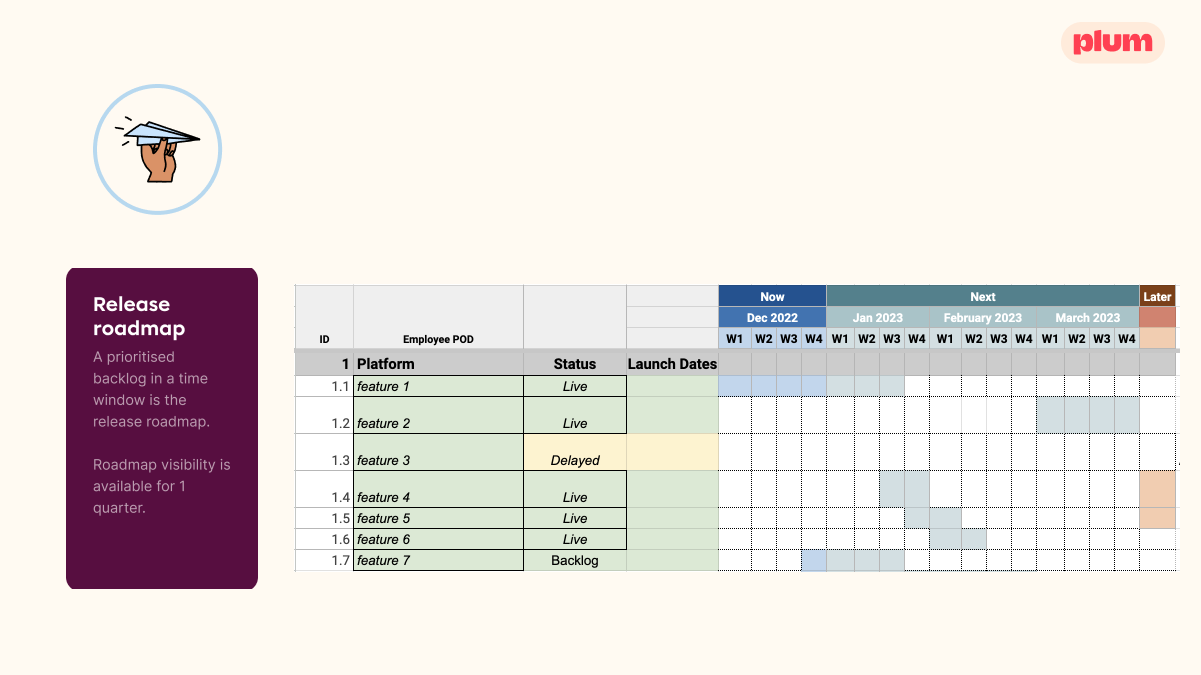
In summary, the transition from OKRs to a release roadmap at Plum is a carefully orchestrated dance that involves backlog creation, prioritization, and time alignment. This systematic approach ensures that every function within the organization—from engineering to customer support—is united in working toward a shared set of objectives. This allows us to meet both customer needs and our broader business goals consistently.
Step 3: Listening and Grooming
Our product teams are continuously receiving requests for new features or improvements from various sources. We have formalised four channels where we continuously listen for what's working and what's not.
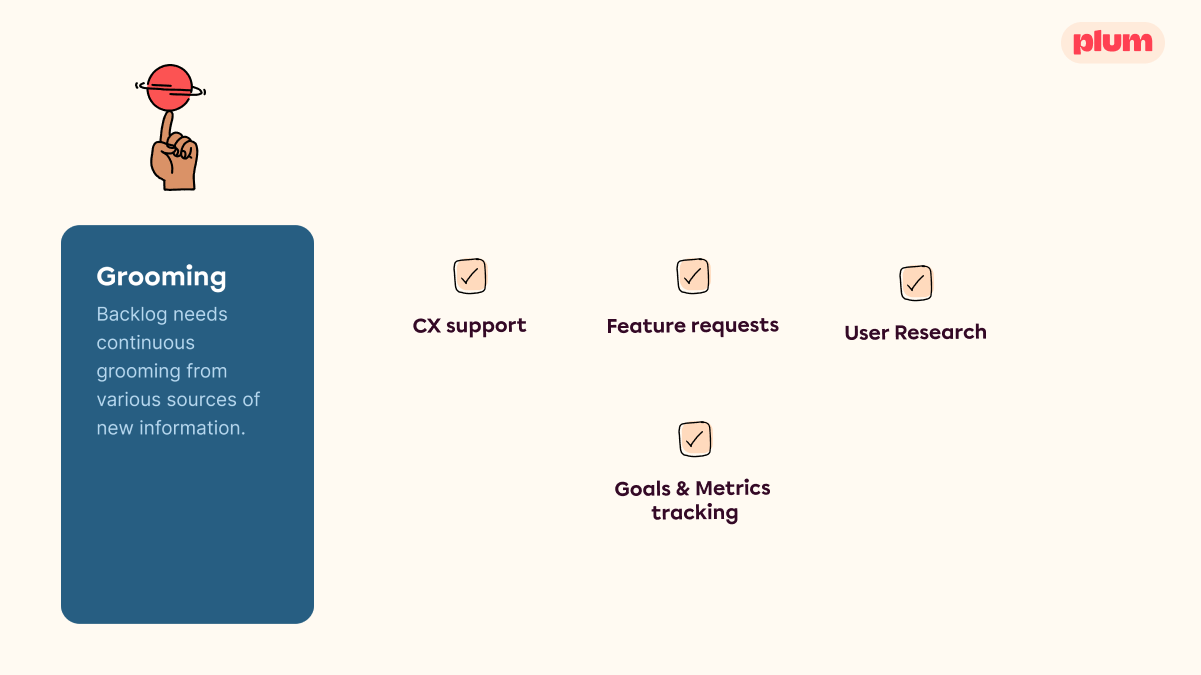
- Cx support: Feedback from customer support channels can help identify areas that need improvement or highlight bugs that need fixing immediately. We use Zendesk for customer support and get about 1000 support queries each month from various channels, including chat, email and phone. We have also set up an on-call process from product and engineering where any product issue is assigned to an engineer as the first responder. The on-call weekly brings out patterns of support issues that feed into our backlog as systemic fixes. The rule of thumb here is that anything which is repeated as a bug, we solve it systemically as an engineering backlog or a product feature.
- Feature requests: Teams such as account management, sales, and customer success can request a new feature or improvement through a simple google form. These requests are usually based on customer feedback, market trends, or business needs.
- UX research: Qualitative inputs from research synthesis on problems of interest. These inputs can provide valuable insights into customer behaviour and pain points that need addressing.
- Goals and metrics optimization: Continuous improvements in goals and metrics can result in a new worklog. These metrics can include key performance indicators (KPIs) such as user engagement, retention, and conversion rates.
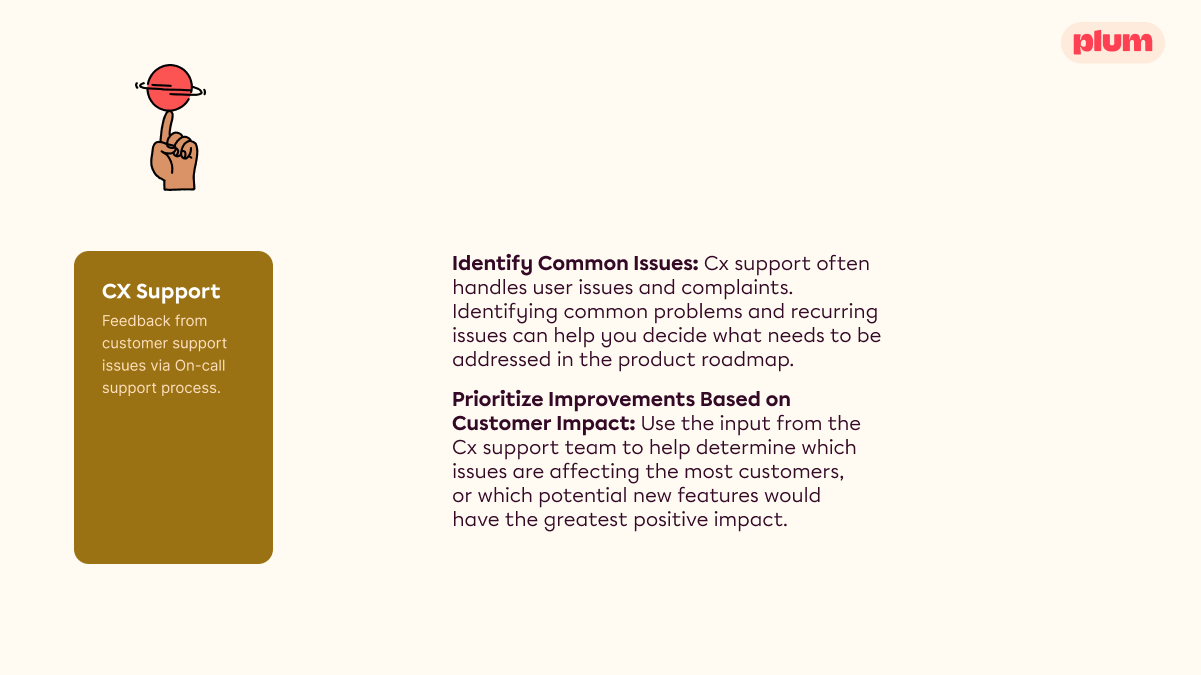
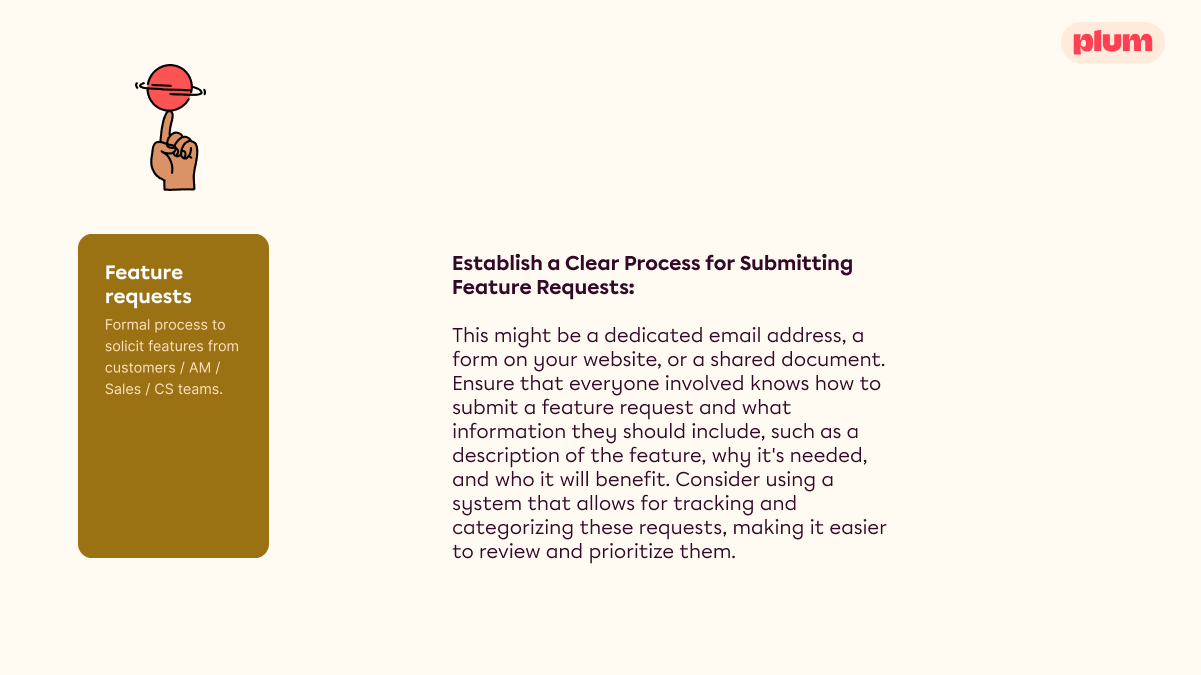
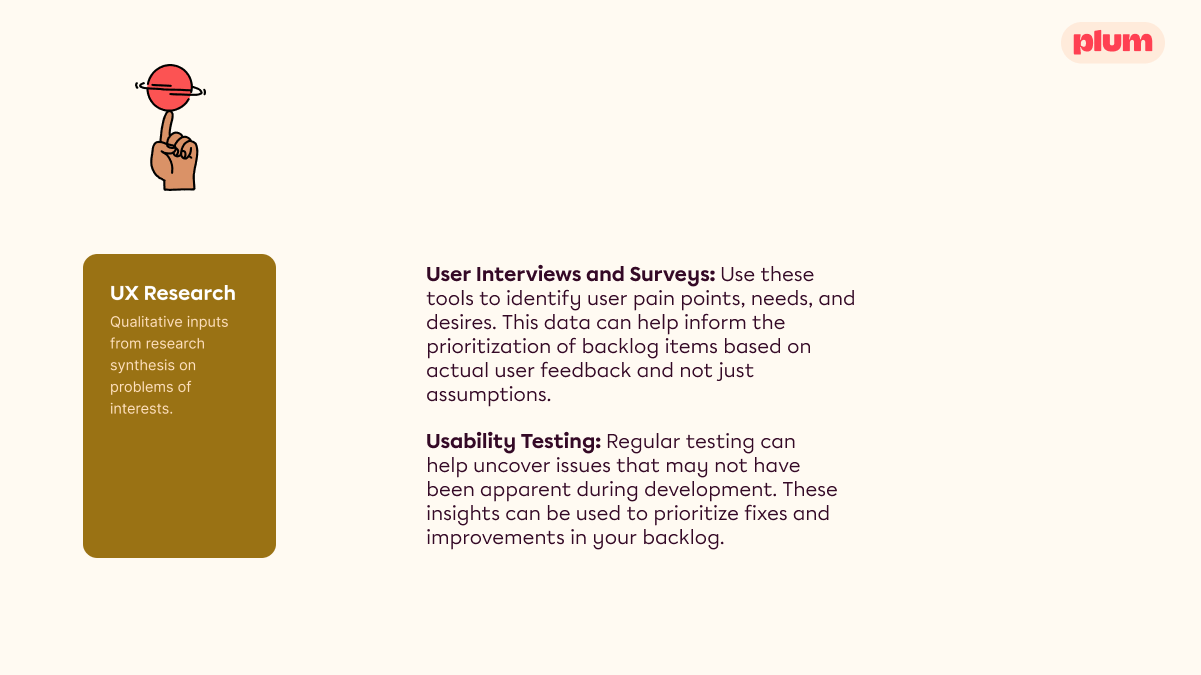
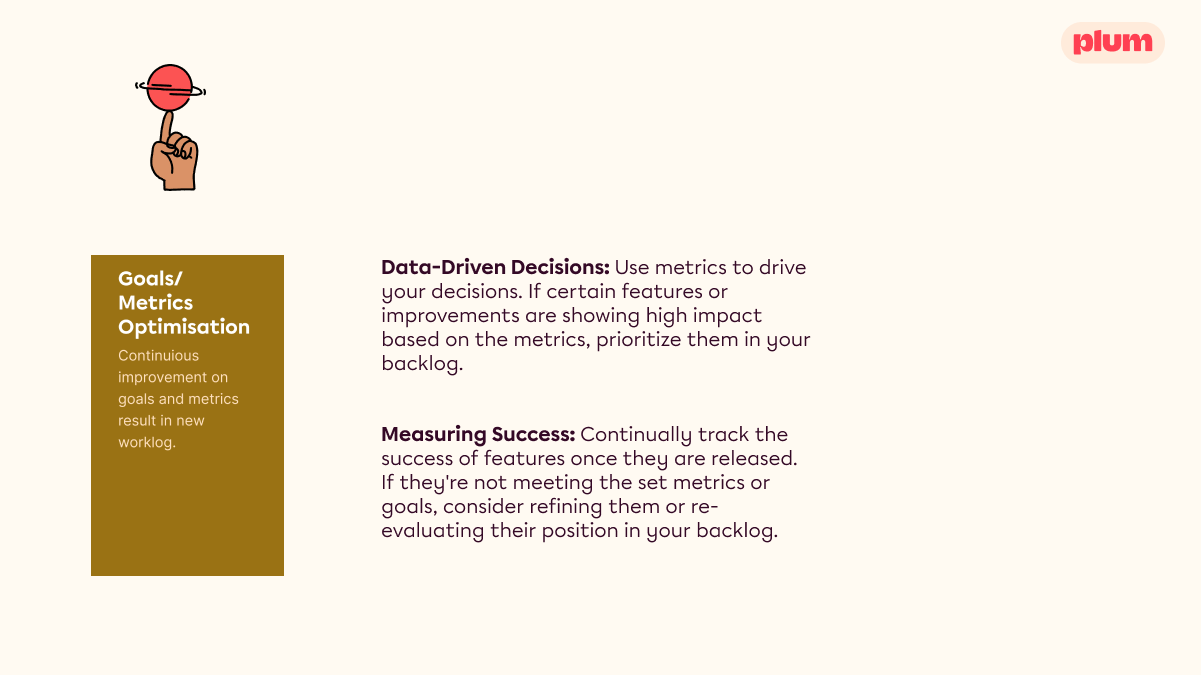
Step 4: Executing the roadmaps
We've laid the groundwork, set our OKRs, populated our backlogs, and crafted our release roadmaps. But what comes next is just as critical: executing these meticulously planned roadmaps to turn vision into reality. How do we navigate unforeseen challenges? What are the best practices for aligning cross-functional teams during the execution stage?
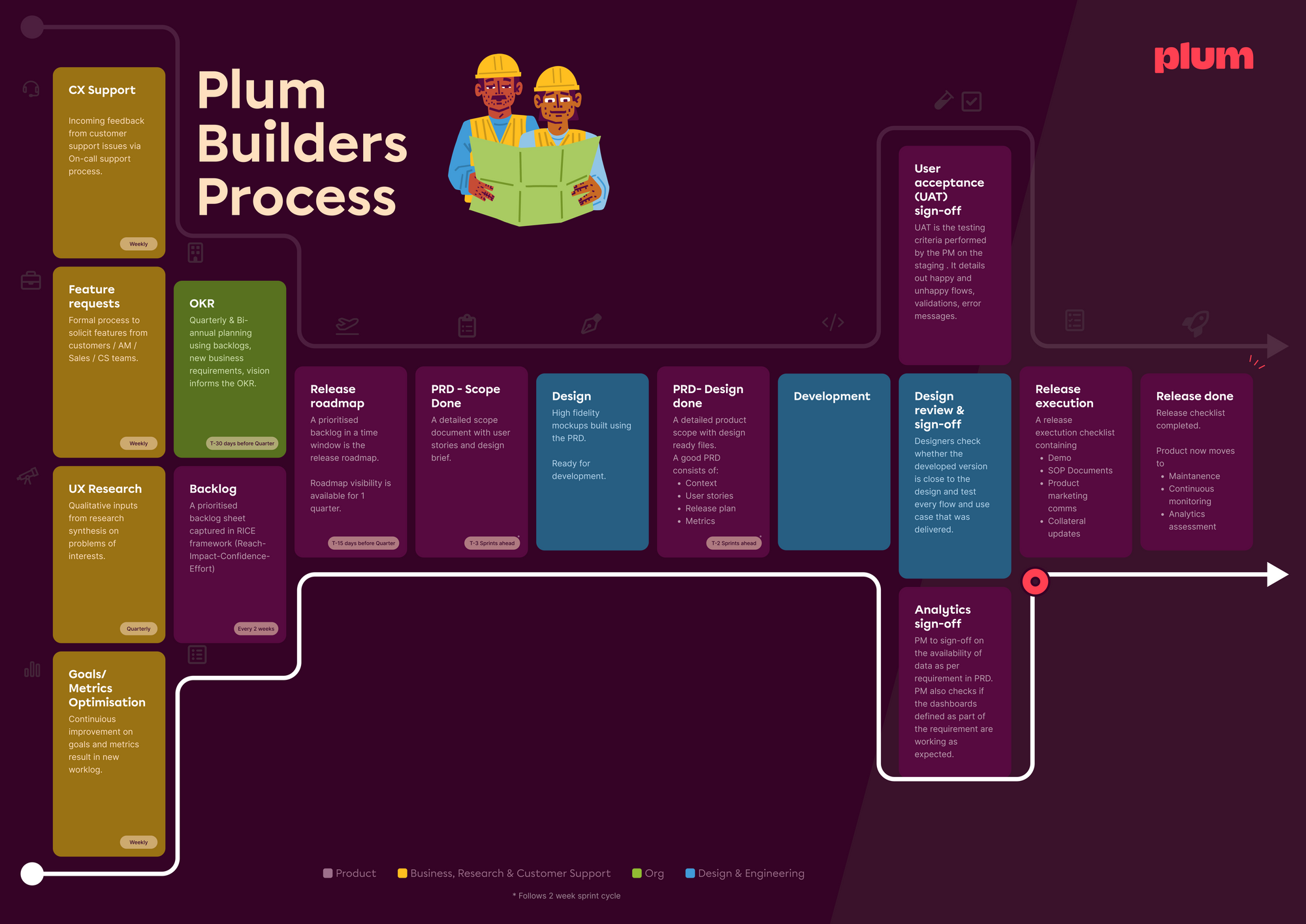
Stay tuned for the next installment where we'll dive deep into the art and science of executing roadmaps at Plum. This process visualization poster gives you a sneak peek of what's to come. We'll share insights, frameworks, and lessons learned to help you bring your product vision to life.
Ciao!



Comments